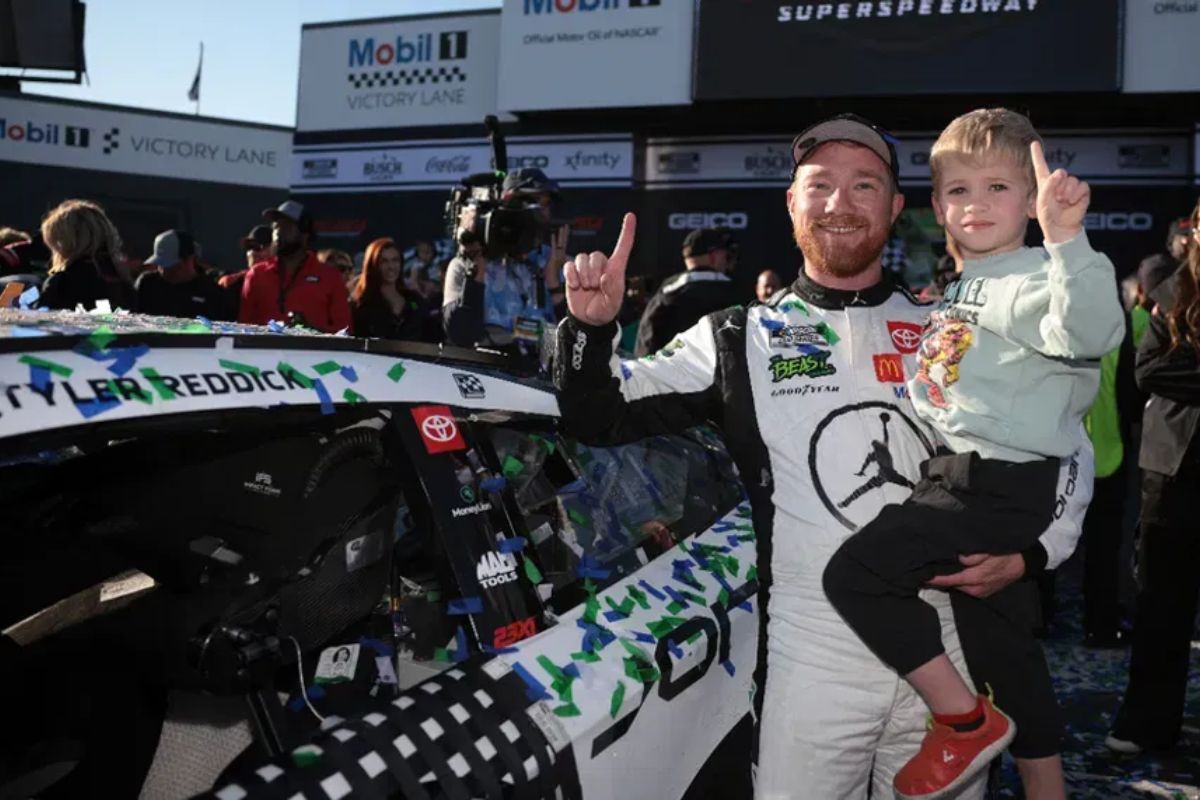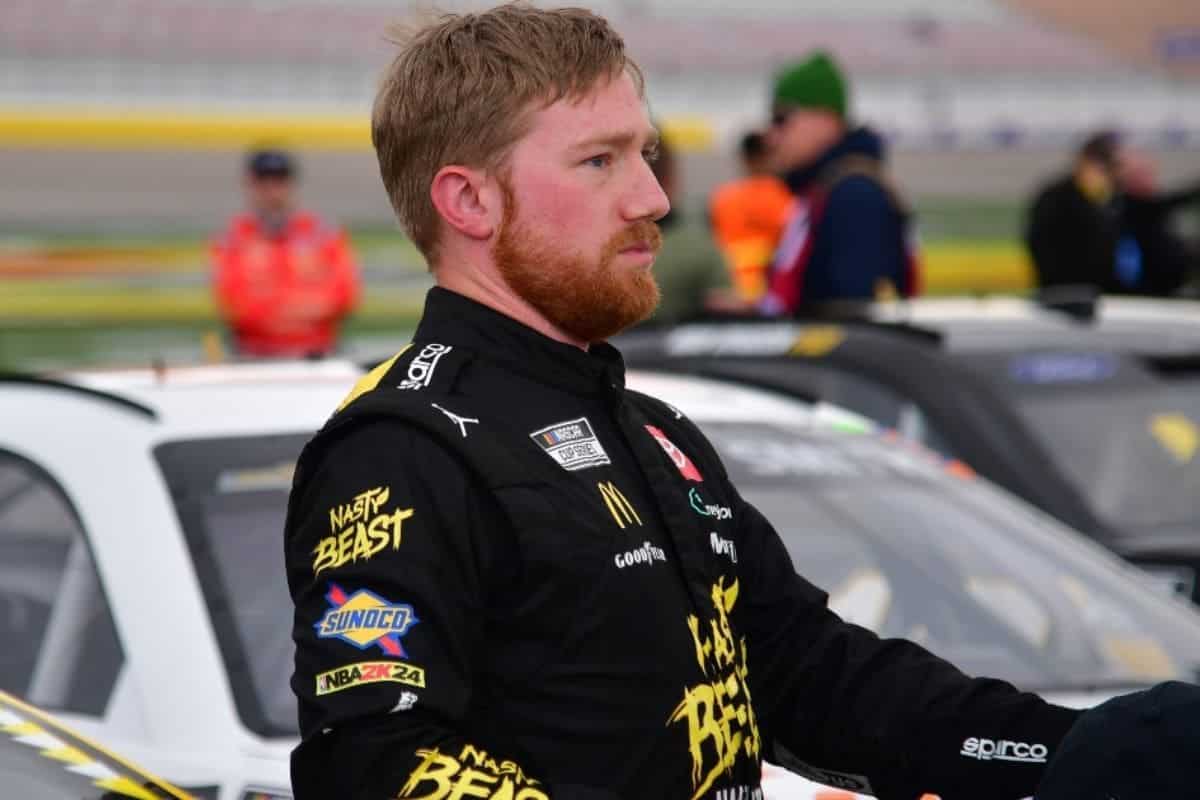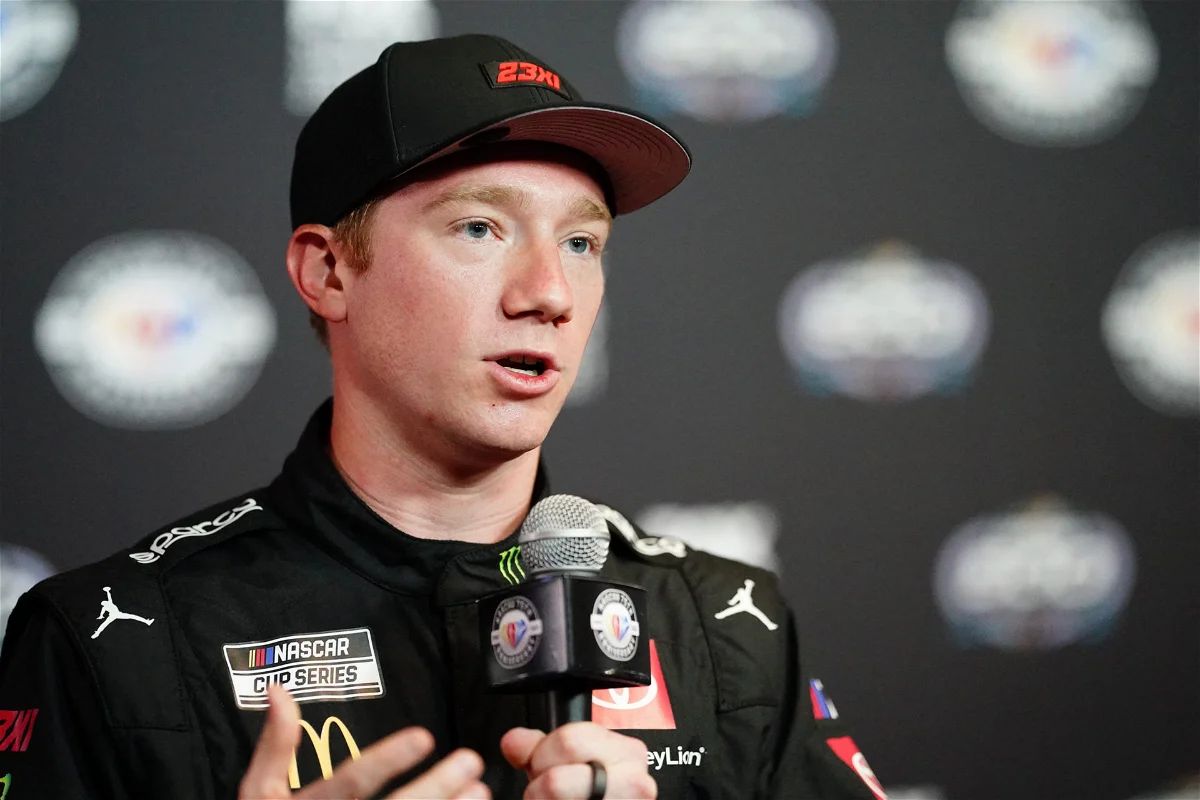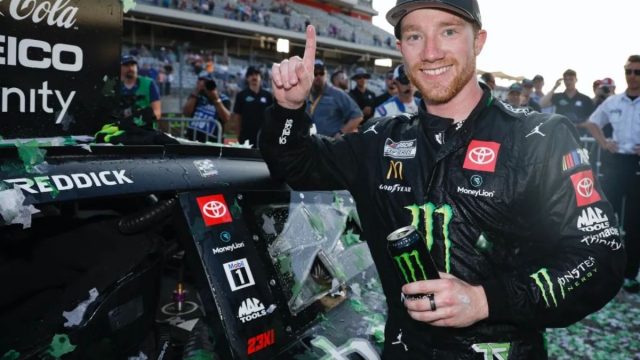Tyler Reddick Disappointed: Tyler Reddick’s recent expression of disappointment following the performance downgrade at 23XI Racing during the Kansas Speedway event shows a pivotal moment for the team. The contrast between the high practice speeds and the actual race outcomes invites a deeper examination of the strategic decisions and operational dynamics within the team. Reddick pinpointed several areas needing improvement, including tire strategy and team communication—elements critical to optimizing race day outcomes. This scenario raises questions about the team’s ability to recalibrate and adapt ahead of the upcoming challenges, particularly with the Darlington Raceway on the horizon. How 23XI Racing addresses these concerns could very well redefine their season’s trajectory.
Key Takeaways
- Tyler Reddick expressed disappointment due to strategic missteps and performance issues with 23XI Racing at Kansas Speedway.
- Errors in qualifying and communication during the race impacted his overall race performance.
- Issues with tire setup and car balance were identified as key areas needing improvement.
- Reddick emphasized the need for better preparation and adjustment strategies to enhance race outcomes.
- His experience at Kansas contrasted with his previous success and preparation standards at tracks like Darlington.
Disappointment at Kansas Speedway
Why did the high expectations at Kansas Speedway crumble for Tyler Reddick and the 23XI Racing team despite their strong performance in practice?
The unraveling of high hopes at Kansas can be attributed to a complex interplay of strategic missteps and possibly unanticipated race-day variables that impacted the team’s performance. Despite Reddick showcasing a formidable speed of 181.001 mph in practice, translating practice superiority into race-day success is fraught with challenges.
Firstly, practice sessions, though indicative, do not always mirror the dynamic conditions encountered during the race. Variables such as changes in track temperature, tire performance under longer race stints, and in-race adjustments can dramatically alter a car’s race-day behavior. It’s plausible that the 23XI Racing team, while adept in tuning the car for blistering single-lap speed, may have struggled with the car’s race trim setup, which requires a balance between speed and consistency over numerous laps.
Moreover, strategic decisions regarding pit stops, tire choice, and fuel management play a pivotal role. A misjudgment in any of these areas can cost precious moments, relegating a team from the front of the pack to a middling position. The intense competition in NASCAR means that even minor errors can lead to significant setbacks.
Lastly, external factors such as traffic on the track, interactions with other drivers, and caution periods can disrupt a team’s strategy and rhythm. For Reddick and the 23XI Racing team, any combination of these factors could have derailed their expected performance at Kansas Speedway, transforming potential into disappointment.

Reddick’s Analysis of Kansas Race
Reflecting on the Kansas race, Tyler Reddick pinpointed specific errors during qualifying that adversely affected the team’s collective performance. He detailed how these early mistakes set a challenging tone for the remainder of the event, stressing the importance of precision in the initial stages.
“We never really gave ourselves a chance though. I made some pretty big mistakes early in the (Kansas) race, tore the car pretty bad and we still were able to get back up to fifth with a pretty damaged race car. But yeah, finishing 20th and running where we did on stage three was not what we wanted.” – (Reddick)
Reddick’s critique not only highlighted the immediate consequences but also showed a broader strategy for improvement. He emphasized the need for a more rigorous approach to pre-race preparations and adjustments, aiming to refine their execution to avoid repetitive setbacks.
“We just were extra motivated when we went back to the shop this week, Bob (Pockrass). We got our mindset right and we brought a really fast Toyota Camry. We did a good job in practice understanding what our car needed for qualifying. And we just maximized qualifying well.” – (Reddick)
Reddick’s analytical perspective on the Kansas race reveals a deep understanding of the interconnectedness of race phases. By analyzing the qualifying laps, he identified key areas where incremental improvements could lead to significant competitive gains. His focus on detailed analysis serves as an important learning point for the team, urging them to integrate these insights into their routine evaluations and strategy formulations.
“Knowing the speed that the #11 had and the other Toyotas had, yeah it hurt, but these things happen in racing. So we certainly learned a lot from it.” – (Reddick)
Tyler Reddick speaks to the media after winning the pole for tomorrow’s Goodyear 400. The big topic of conversation is the facial hair? Will he hang on to it if he wins? pic.twitter.com/HV9SIeaQcp
— Deez Lug Nutz Podcast (@deezlugnutz) May 11, 2024
Preparation for Darlington Raceway
In preparation for the Darlington Raceway, Tyler Reddick and his team have harnessed a renewed sense of determination and a strategic approach to car setup, promising a robust performance during the upcoming race. The focus has been intensely placed on optimizing the vehicle dynamics to suit the distinctively abrasive track surface of Darlington. Known for its tire wear challenges, the track requires a delicate balance of aggression and conservation, a balance Reddick’s team aims to perfect.
The team’s strategy revolves around a thorough examination of telemetry data from past performances, coupled with recent upgrades to their racing setup. Emphasis has been laid on achieving an ideal aerodynamic profile that can handle Darlington’s notorious turns with precision. This involves tweaking the car’s suspension setup to improve tire longevity while maintaining speed through the race’s long green flag runs.

Reddick’s Dominance at Darlington
Tyler Reddick’s dominance at Darlington Raceway is largely attributed to his acute familiarity with the track and the extensive testing he has conducted with different car models. His deep understanding of Darlington’s unique shape and abrasive surface has provided him a competitive edge that few can claim. Reddick’s methodical approach to mastering what is often referred to as ‘The Track Too Tough To Tame’ shows a strategic depth that is rare and commendable in stock car racing.
Kyle Busch experienced two wrecks during the Truck Series race, leading some fans to label him as washed up. However, when Dean Thompson lost control at turn 2, causing multiple frontrunners to wreck out, it became evident that even the most skilled drivers can succumb to Darlington’s challenging narrow turns. Despite this, if there’s one driver poised to conquer Darlington this year, it’s Tyler Reddick.
“I have a lot of fun racing other competitors, but I have a lot of fun just running laps at this track as well. You know, my first-ever laps in the Next-Gen car and the NASCAR Next-Gen version 3 car were here. We had a test, the thing was a handful to drive. Had a lot of fun in it.” – (Reddick)
REPOST to congratulate Tyler Reddick!
That mustached man is on pole for Darlington! #NASCARThrowback pic.twitter.com/ihk13aZ3R3
— NASCAR on NBC (@NASCARonNBC) May 11, 2024
Outlook for Darlington Race
Despite recent setbacks, Reddick’s pole position at Darlington offers a promising opportunity for 23XI Racing to reclaim their competitive form. This pole position, secured amidst a period of team struggles, not only uplifts morale but also places Reddick in an advantageous spot for the upcoming race. Given his prior performances and acute understanding of the Darlington Raceway, often termed ‘The Track Too Tough To Tame,’ Reddick’s current positioning is not just a reflection of his driving prowess but also a strategic advantage from which the team can orchestrate a much-needed victory.
“I‘ve had some unique experiences that have probably helped me get better here. But I think the biggest thing is just the way the tires wear out and the amount you have to move around, the amount of risk you have to take every single lap and manage that for a whole race has kind of benefited me and how I drive a race car.” – (Reddick)
Analyzing Reddick’s approach to Darlington, his technique on such a uniquely challenging track will be pivotal. Darlington demands a blend of aggressive driving and meticulous tire management, skills that Reddick has demonstrated in past races. His ability to navigate the high-wear surface could set him apart from competitors, especially in the critical closing stages of the race where tire strategy often decides the outcome.

News in Brief: Tyler Reddick Disappointed
Tyler Reddick’s dissatisfaction with 23XI Racing’s performance at Kansas Speedway shows the critical importance of strategic planning and effective communication within NASCAR teams.
The issues identified, including tire setup and pit stop timing, highlight areas requiring immediate attention and improvement.
As the focus shifts to Darlington Raceway, the necessity for meticulous preparation and tactical refinement becomes paramount to capitalize on Reddick’s proven capabilities at the track and to improve recent shortcomings.
Our Reader’s Queries
Q: Why does Denny Hamlin not race for 23XI?
A: During the latest episode of “Kevin Harvick’s Happy Hour,” Hamlin shared insights on his potential move to 23XI Racing, highlighting the importance of time and resources. He emphasized the significance of building a competitive pit crew, underscoring its pivotal role in modern racing outcomes, suggesting a thoughtful approach to any prospective transition.
A: 23XI Racing, pronounced “twenty-three eleven,” stands as a prominent American auto racing outfit, vying for supremacy in the NASCAR Cup Series. Spearheaded by basketball legend Michael Jordan and three-time Daytona 500 champion Denny Hamlin, the team embodies a fusion of sporting prowess and racing excellence.
Also Read: Denny Hamlin Chasing Legends With Lap-Leading Streak
